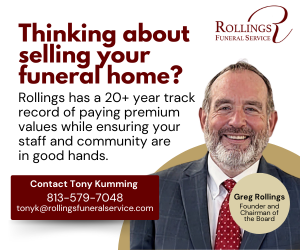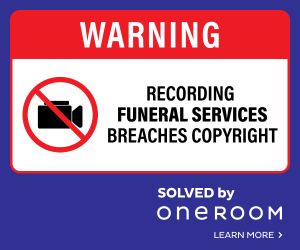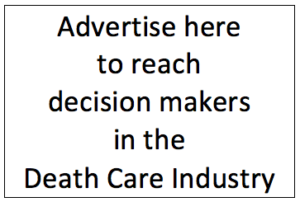Can your funeral home afford to increase prices amid rising costs?

I operated my funeral home from 1980 to 2013 and in that time period we increased prices every year. I always looked for an average of about 3% but was able to increase my cremation prices more than that as cremation was growing in popularity. And, it seemed that our price increases also increased margins as the inflationary rate of our costs, on average, were less than we increased prices.
As our number of services increased, so did our average margins, and profitability also did. There is no doubt that as you set your budgets for 2026 growing margins may be somewhat difficult to realize when you consider the costs of your goods and services to operate your funeral home are continually rising. According to Gemini artificial intelligence the average annual rate of inflation from 2000 to 2020 was about 2.2% annually. . . .meaning a 3% rise in prices would theoretically increase margins. However, when asked the average inflation rate from 2020 to 2025 Gemini AI aswered “approximately 4.53%” to the same question. . . . . That would make a 3% average increase in prices result in a loss of margin per case.
And of course, the traditional funeral home business is somewhat unique in that the choice of use and services consumers use is a one-time decision for each person. So, if your highest priced and highest margin services are increased too much one ramification is that a consumer may choose a different service — such as direct cremation — to move their price point downward. . . . and with it, lower your margin on that case. In the reality of this dynamic, setting price-points for your various services can be a difficult dance.
And at least for the short period of time I don’t see these inflationary costs going away anytime soon. As you can read in this notice from the Bureau of Labor Statistics “The all items index rose 2.9 percent for the 12 months ending August, after rising 2.7 percent over the 12 months ending July.” That means that in spite of our hopes of it receding, inflation was at a higher rate in August than it was in July.
I’ve also noticed in some articles, that I’ve linked below, predictions that other cost items will increase as well. Items such as employer health care plans and commerical property insurance are expected to become more expensive moving forward. Here’s some quotes from those articles:
- The total health benefit cost per employee is expected to rise 6.5% on average in 2026 — the highest increase since 2010 — even after accounting for planned cost-reduction measures.
- Employers estimated that plan cost would increase by nearly 9%, on average, if they took no action to lower cost.
- Based on the projections, 2026 will be the fourth consecutive year of elevated health benefit cost growth following a decade of moderate annual increases averaging only about 3%.
- (a survey showed) 59% of employers will make cost-cutting changes to their plans in 2026 — up from 48% making changes in 2025 and 44% in 2024. Generally, these involve raising deductibles and other cost-sharing provisions, which can lead to higher out-of-pocket costs for plan members when they seek care.
- Employees are likely to see higher costs for their health coverage in 2026.
- Employees could expect their paycheck deductions for health coverage to rise by about 6% to 7% on average. At the same time, because many employers will raise deductibles and copays to limit premium increases, higher out-of-pocket spending may also be a factor for some employees.
- Commercial insurance rates in the US continued their upward trajectory in the first quarter of 2025, with the composite rate rising by 3%. Umbrella and excess liability coverage, along with commercial auto, saw the most significant increases, both climbing by 6.7%.
- Commercial property insurance premiums rose by 3.6%, with business interruption coverage seeing a similar increase of 3.6%.
Related Articles:
- Employeers prepare for the highest health benefit costs in 15 years. Mercer, a division of Marsh McLennan
- U.S. commerical insurance rates continue upward trajectory. Insurance Business (Dated April 7, 2025)
- Forces impacting the commercial property insurance landscape. The Travelers Group

Tom Anderson
Funeral Director Daily
Funeral Director Daily take: I would suggest that the least favorite responsibility that I had in operating a small business took place every October when I received the employee health insurance quotes from our providers and had to make a decision on how we would handle employee health insurance for the next year.
I also knew what I would take for insurance if I was making the decision simply for my family. However, in a small business every employee has a different situation and trying to make a decision that could please all of them was virtually impossible. I don’t envy any of you having to make that decision.
And, the decision brings other decisions that are also difficult to make. For instance, if you pick a plan that is quite a bit more expensive than the plan you had for the calendar year 2025 then you also have to figure the costs into your prices and try to figure out what the increased prices may do to your selected product mix (i.e. burial/cremation).
It’s a delicate balance between providing the best situation for your team members while also understanding that your fixed costs drive your price points and that the price points for differing types of services make a big impact on not only if consumers will use your firm but what services they will select.
More news from the world of Death Care:
- Boulger Funeral Home: Tradition, innovation, and compassion in every detail. Meet Fargo Magazine (ND)
- College of Southern Nevada launches Nevada’s first-ever funeral service program. KLAS – TV – Las Vegas (NV)
- Local cemetery among America’s “Most Beautiful Hidden Gems”. Yahoo News and WJW – Cleveland (OH)
- Celebrating 10 years of natural burial site. Express and Star (Great Britain)
Enter your e-mail below to join the 3,201 others who receive Funeral Director Daily articles daily
“A servant’s attitude guided by Christ leads to a significant life”





















